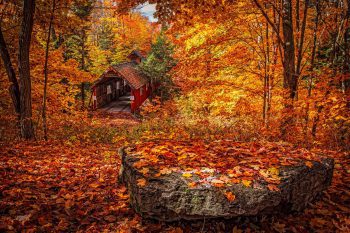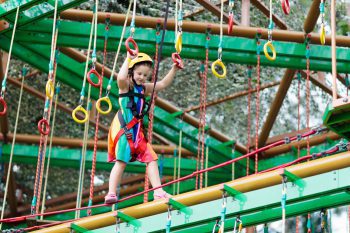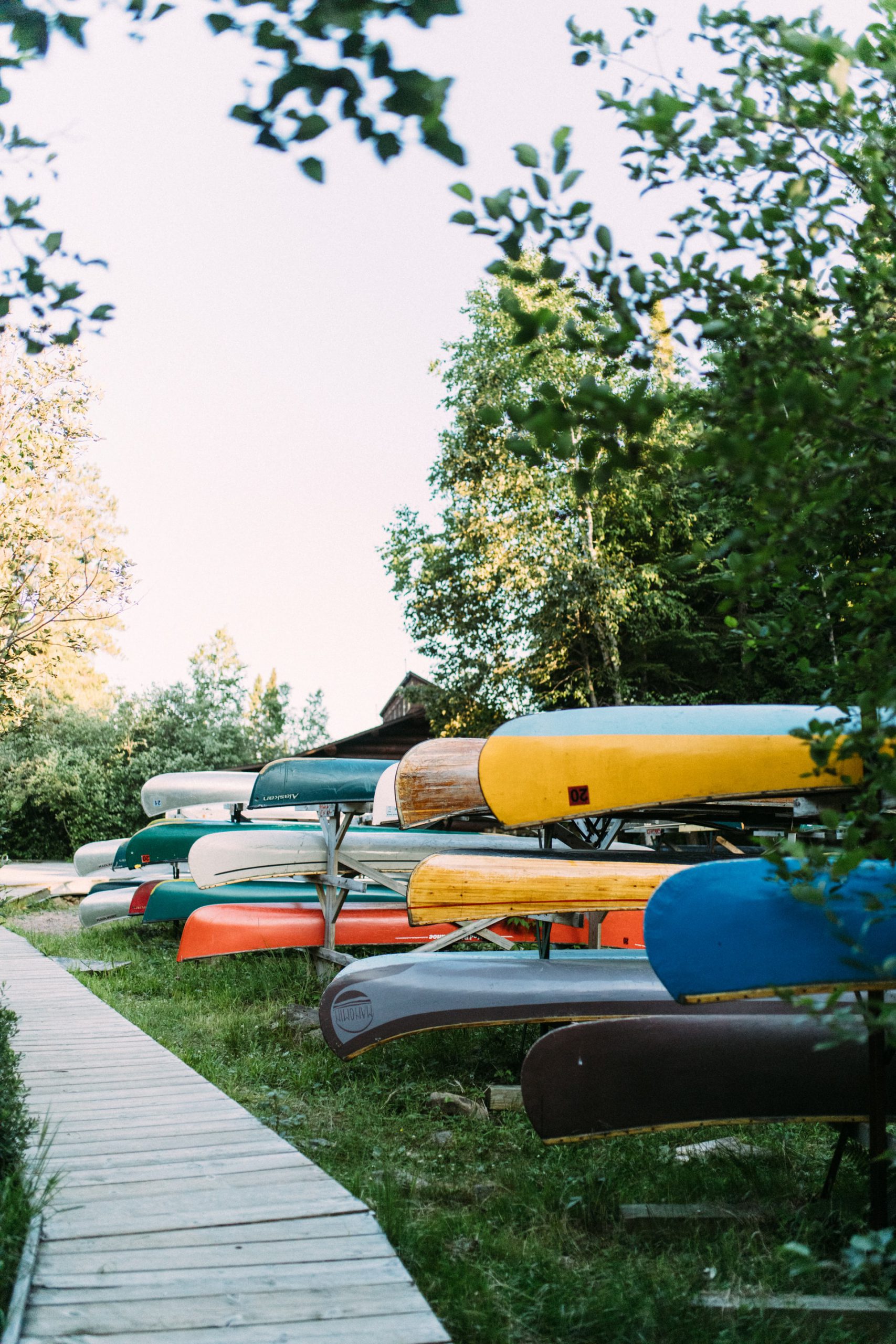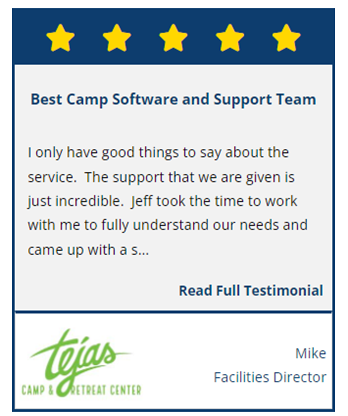 With the summer winding down, now is the best time to prepare camps and recreation facilities for the long-dormant winter months ahead. Performing preventive maintenance and completing important fall maintenance tasks now saves a lot of time and aggravation and will make your life easier when you return to reopening in the spring.
With the summer winding down, now is the best time to prepare camps and recreation facilities for the long-dormant winter months ahead. Performing preventive maintenance and completing important fall maintenance tasks now saves a lot of time and aggravation and will make your life easier when you return to reopening in the spring.
Below are a few best practices to consider when preparing your facilities for closing them down before the upcoming winter months. These are just recommendations but the list will vary considerably depending on the type of camp that you have or what part of the country your camp is located in. Having a checklist ensures that everything has been completed and will help make opening day a lot easier.
Cleaning Interior: Offices, Kitchens, Other Rooms, and Electronic Devices
- Check furniture, couches, chairs, benches check in the crevasses, under cushions, and furniture to ensure that there are no food particles.
- Any camps that have beds, either for overnight or for sick rooms, dust or sanitize bed frames, side tables, lamps, mirrors, clothes rack, head/footboards, and dressers.
- Sick Rooms: Wipe down, disinfectant and sanitize the room, cabinets, patient bed, etc.
- Sick Room: Restock the first-aid kit and other medical supplies that you keep on hand during the year.
- Sick Room: Make a checklist of the things you have in stock and keep them in a sealed storage container to avoid any rodents or pests infiltration.
- Wipe down and sanitize door handles, doors, and window frames.
- Close and lock windows and close curtains.
- Wipe down, disinfect and sanitize remote controls.
- Throughout the rooms remove any left behind clothing, toiletry items, or any items that were left behind. (Such as a lost and found box.)
- Empty and clean all trash cans.
- Unplug computers, air conditioners, microwaves, and major appliances. (A powerful bolt of lightning and wipe these out quickly.)
- Shower areas make sure that all showers, shower drains, sinks, mirrors, and toilets are cleaned, disinfected, and sanitized.
- Most camps are located in country settings near water. Dormant buildings are good breeding grounds for mold. This would be a good time to research your area to find out what can be done to avoid mold.
- All internal areas should be sweep and mopped at the end of all of the maintenance tasks.
- Any towels or linens should be cleaned and stored in an appropriate container or area away from any type of infiltration of unwanted critters and pests. Keeping mothballs or dryer sheets near linens may repel unwanted pests.
- Furniture and bedding should be cleaned and covered.
- Remove clutter, newspapers, rags, chemicals, or boxes to prevent fires.
- Remove all cleaning supplies, pesticides, and chemicals to ensure that they will not freeze and explode due to the dropping temperatures.
- Clean the stove and make sure that there is no food or anything such as food crumbs or grease deposits.
- Clean out grease traps.
- Remove batteries from all electronics, such as clocks, radios, etc.
- Seal up cracks, crevices that are ¼” or larger to keep unwanted critters out.
Kitchens
- Wipe down and sanitize counters, sinks and faucets, and cupboards.
- Check the refrigerator. Discard all leftover food. Dispose of any food in the freezer. Clean and sanitize inside shelves, drawers, and doors. Vacuum or sweep under the fridge to remove all dust.
- To avoid unpleasant orders when you return, wipe down, sanitize and dry the entire inside outside of the refrigerator including the top. make sure that the inside and outside are clean and dry. Leaving the refrigerator door open slightly will help prevent odors and mildew from forming during the winter months.
- Refrigerator ice maker, make sure you have followed the directions for the appliance’s operating instructions. Once it has been cleaned, make sure that it is turned off or whatever the manufacturer’s operating manual recommends.
- Check and unplug the microwave. Wipe down and sanitize the inside and outside.
- Appliances: Unplug and clean all electronics and appliances. Coffee pots, waffle makers, etc. Toasters have pans to collect crumbs, empty them in the trash.
- Clean and dry your stove, and ensure that it is free of any leftover, caked-on food so that it doesn’t attract rodents and bugs.
- For smaller appliances cover them with a cloth or store them in a sealed bag to help keep them clean and dust-free.
Utilities: Water, Electricity, Phone, Gas, and Heat
Water:
The one objective at the top of your list is to prevent pipes and fixtures from freezing. If your camp is going to be shut down for the winter and not heated, it is a good idea to winterize your water system.
- Ensure that the power and water are in the proper mode for a long vacancy. Unless you are trained and experienced in winterizing water systems and have the proper tools and equipment, it would be best to create a checklist that is appropriate for your camp or hire a qualified technician who specializes in your type of system in your geographic location..
Electricity and Phone:
- If you are not going to be needing your electronics or phone, notify your providers, keep in mind that there may be a reconnected fee.
Gas and Oil Heating Systems
- Unless you are trained and experienced in winterizing plumbing and heating systems and have the proper tools and equipment, it would be best to create a checklist that is appropriate for your camp or hire a qualified technician who specializes in your type of system in your geographic location.
Outside Maintenance

- Wipe, disinfect, and sanitize high-touch surfaces that are made of plastic or metal, such as grab bars, play structures, and railings. Disconnect garden hoses and empty pipes leading to outside faucets.
- Yard maintenance. Remove excess foliage, fallen branches, pine needles, and leaves surrounding your camp buildings which can be hazardous and cause a fire.
- Now is the time to rake and trim trees and limbs as necessary.
- Septic system: Check your septic system’s leach field for any breakouts and consider having the tank pumped if it has not been pumped recently. Now is the time to do this versus during a busy camp season.
- Protection from rodents: Damage from rodents such as mice and squirrels is also a concern for campsites. To prevent these unwanted guests, inspect the buildings inside and out to make sure there are no openings for rodents to enter. Remove all food sources from the camp before you close up for the season.
- Check the roofing materials to ensure that they are not lifting, cracked, or damaged in any way.
- Sweep and remove any debris that is on the roof. Removing debris such as leaves, pine needles, or any other materials reduces the issue of water not draining properly.
- Check around roof penetrations such as pipes, wires, and chimneys to ensure that the gaskets, flashings, and caulking are sound and free from cracks or defects.
- Clean your gutters so water can run off the roof unobstructed.
- Cut back any branches that are hanging over to help prevent them from coming down onto the roof.
- Clean and store all summer relational materials and equipment.
- Mow the lawn one last time.
- Clean and winterize lawnmower and other gas-powered yard equipment.
- Rake and remove leaves.
- Check for air leaks around electrical wiring, vents, pipes, windows, and doors; then seal leaks with caulk or insulation to keep out cold air and pests.
- Clean out gutters, and inspect roofs for shingles that are raised or cracked; leaking roofs and clogged gutters can lead to significant water damage.
- If your camp has a lake, it could freeze over, and you need to winterize the dock, boats, or anything that could get damaged on the lake.
- Store outdoor furniture, picnic tables, benches, and hammocks in a safe place to protect them from weather and critters.
Fall Camp Cleanup- Getting Maintenance Management Under Control

Checklists are an important part of successfully managing the closing of camps for the winter months. You need to ensure that nothing has been missed and that everything has been satisfactorily completed. With so many tasks and so many people doing these tasks, managing these using bits of paper or spreadsheets isn’t very efficient. You need to centralized all of these tasks and be able to manage them from anywhere.
Now is the time to get your maintenance operations in order and under control Using Computerized Maintenance Management System (CMMS) software will give you the ability to; (Learn more about what a CMMS is.)
- Preventive Maintenance (PM) Scheduling: Preventive maintenance is routine maintenance that is regularly performed on a piece of equipment to keep it running at peak performance, reducing downtime, equipment failures, and expenses. CMMS gives you the ability to plan and schedule maintenance on equipment before problems occur, maintaining historic records of repairs, parts inventory, and more. With multiple locations and employees spread out throughout multiple worksites, CMMS maintenance planning and scheduling software provides multiple easy-to-use calendar views. View PM schedules by day, week, or month, with access to all labor resources and open work orders.
- Asset Management: Keeping campers safe, camps running and equipment in good operating conditions can be a challenge trying to do this using spreadsheets and bits of paper. Successful management and prolonging asset lifespan all comes down to one thing “tracking”. If you’re not effectively tracking maintenance history and repairs on assets, you’re wasting a lot of time and money. Now is the time to evaluate assets and their conditions, setup PM schedules to ensure that you are ready when camps open. Look at asset repair history and determine if the repairs are costing you more money than the asset is worth. All of this is easily done using CMMS to manage your assets. Before winter begins, gather up all of the information on your assets and put it in a CMMS. Your processes are stored in a centralized system that is updated in real-time, so next fall your work will be easier.
- Tagging Assets: The purpose of tagging or labeling assets helps camps and organizations manage the physical assets and make it easy to make informed decisions in respect of physical inventory and assets, whether it is repair or replace. Asset tags and asset labels help track and prevent theft of physical assets. With CMMS you can scan the asset tags to automatically pull up asset details, open work orders and historical information. Take control of your assets and be ready for next Spring with camps opening.With CMMS Geographic Information System (GIS) and Enhanced Image Mapping technology, camps and organizations enhance their asset tracking capability. Through visual maps, you can locate assets inside and outside of your facility. This feature is not offered by all vendors.
- Inventory Control: To ensure the safety of your campers and staff, maintenance, repairs, and operations can be a challenge. Having the right spare parts in stock saves time and the costly expense of looking for parts when something breaks down. With a CMMS, you can easily setup your spare parts inventory and get notified when stock runs low. In CMMS you can setup specific vendors to control expenses and distribution of parts inventory. All you have to do is log into your CMMS to view and manage your inventory from anywhere.
- Time Management: Knowing the skills and certifications of your employees is important and can save you a lot of time, money, and headaches. In CMMS you can keep track of your resource credentials and schedules, enabling you to allocate the right employee for the right job. Keeping track of work orders, materials purchased, parts used and time spent on each repair or job is easily done through a CMMS. Knowing which piece of equipment is always needing repair and how much time is being spent on repairs can give you more insight on if it’s better to repair or replace it.
- Reporting and KPIs: CMMS gives you the ability to store all of your information in one system. This gives you the ability to run detailed reports on your maintenance operations.Being able to track and monitor the performance of your employees and your assets gives you a better insight into how well they are performing, how safe they are and when it is time to retire the asset because it is costing you more money than it is worth.
From running comprehensive reports to maintaining a dashboard, it is important to know what really needs attention, and that whatever has been repaired is done correctly.
- Compliance, Audits, COVID Guidelines, Sanitization, and more: Today, states vary significantly in their oversight of camp operations and require a system that is broadly applicable and easy to update. In many states, camps fall under the jurisdiction of the state health department, which has set up guidelines for camp operations with added processes and guidelines to lower the risk of COVID-19 exposure and spread. Preparing for these audits and inspections is easily performed through a CMMS.
With a CMMS camps can identify the procedures and processes that need to be done to meet compliance regulations, by setting up a checklist of all of the tasks within their CMMS software that must be followed and completed. From identifying and scheduling workers, keeping historic repair information, to the tracking of preventative maintenance schedules, tasks, maintenance frequency, manuals, notes, instructions, tools/parts needed, and more. Tracking, documentation, and reporting of safety specifications are all maintained in a centralized CMMS database, accessible from anywhere at any time..
- Security: Everyone thinks about keeping the camp environment safe and secure, but how about all of the data on your assets, staff, buildings, etc.? A CMMS records all the data related to the maintenance of equipment, spare parts, maintenance plans, technical characteristics, images, drawings, manuals, and machine activity, maintenance operations, etc.
Vendors say they have a secure network, but do they really? Today, there are companies that specialize in analyzing vendor networks to ensure that data is secure. These vendors provide “Security Scorecards” rating them on their security in various categories. This would be a good time to ask your vendor what their rating is and share their cybersecurity scorecard with you. An example of Security Scorecard: https://eworkorders.com/eworkorders-cybersecurity-scorecard/
The nice thing is that all of these tasks can be managed right from your computer, Smartphone or mobile device. Computerized Maintenance Management System (CMMS) software gives users the ability to take control of your maintenance operations within one centralized system.
If you would like to learn more about how camps use CMMS today, just contact us to speak with one of our account managers.
This article is a basic guide that was intended to assist you in winterizing your summer camp. As with many other checklists, tasks may be different within camp environments, by geographical location, etc., and it would be impossible to cover every summer camp task. Creating checklists in CMMS gives you the advantage of keeping everything organized, providing real-time status, protecting your data, and helps to ensure that your camp will be easier to open next year.
